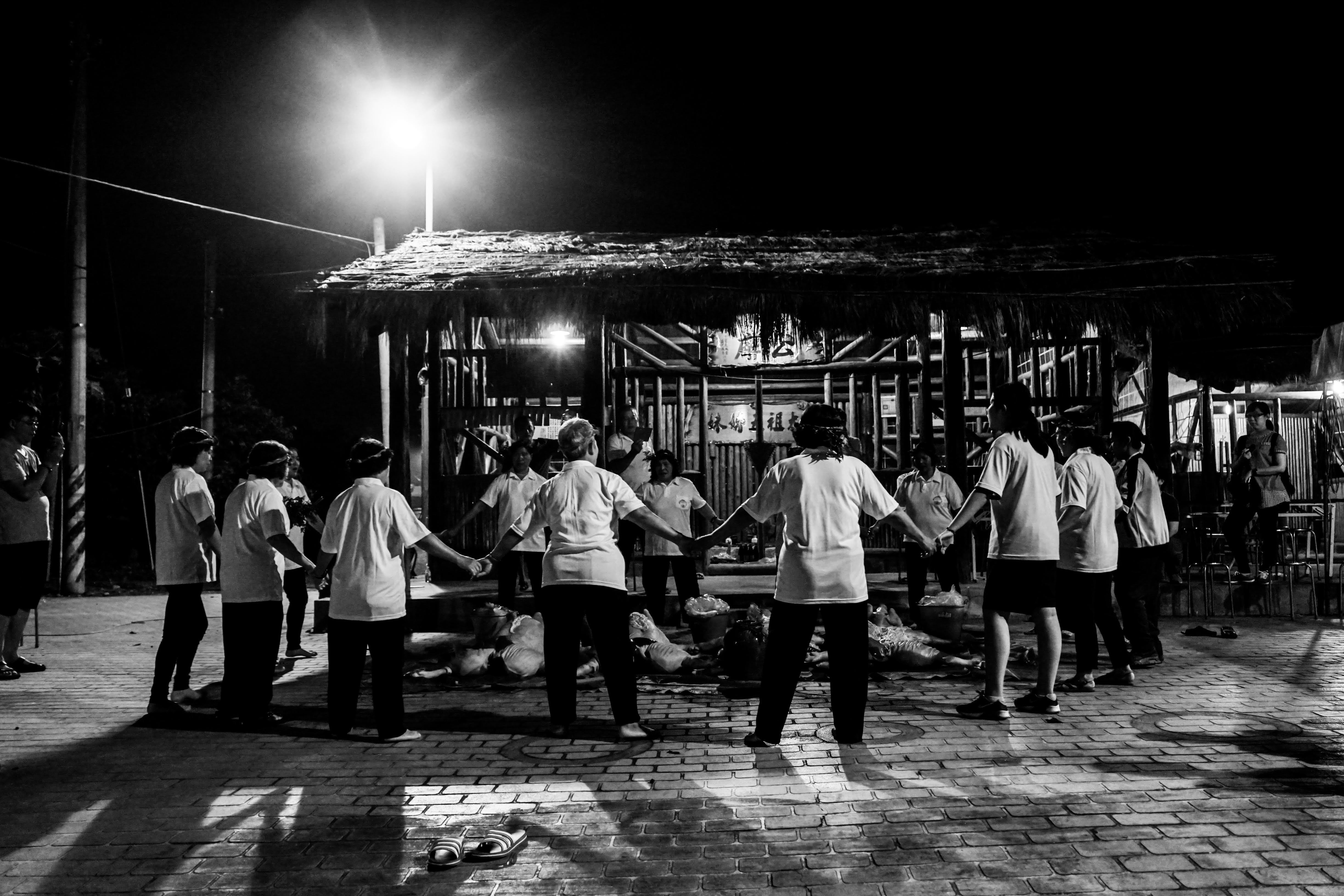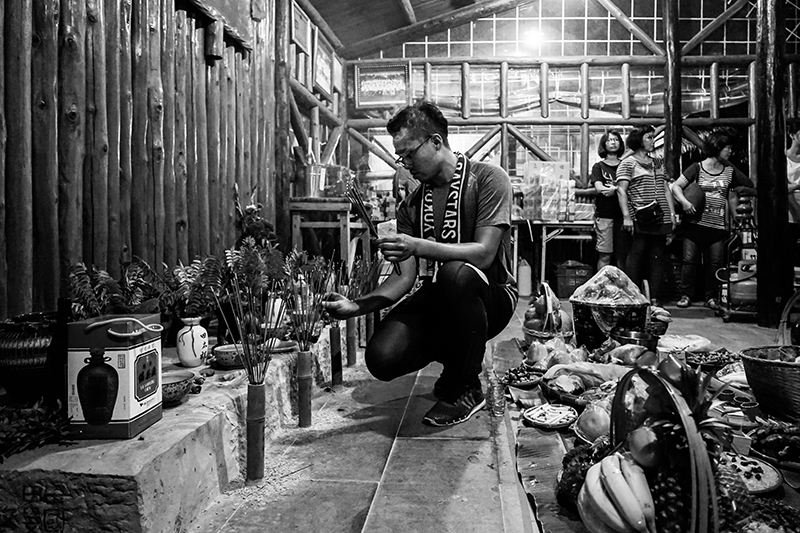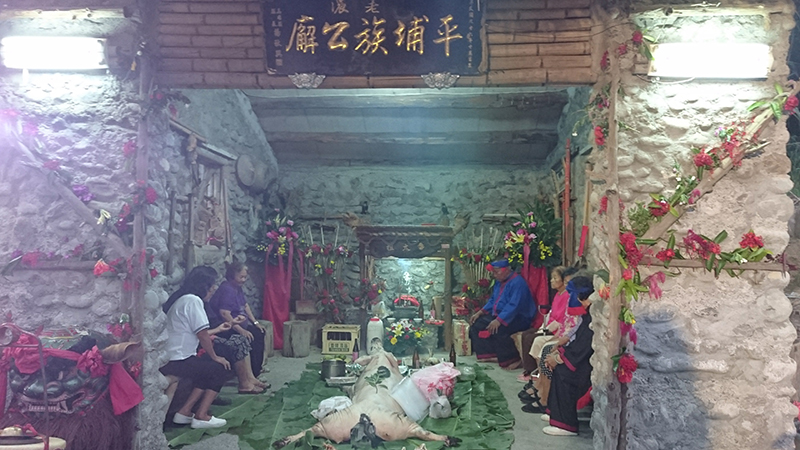If you ask which group of Taiwanese Plains Indigenous Peoples is the least-like “plains” indigenous peoples, the answer would be the Taivoan. Currently the Taivoan mainly reside in Kaohsiung's mountain areas such as Jiasian, Sanlin, Liugui, and Neimen, and these locations are actually at a higher elevation than many mountain indigenous peoples' villages.
The home village of the Taivoan people was originally near the Yujing basin in Tainan, covering places such as Upper Taivoan Village, Xiaoli Village, Qieba Village, and Vogavon Village. These four villages were later referred to as the “four plains indigenous peoples’ villages”. However, after the Siraya who originally lived on the coastal plains in Tainan moved to the low elevation mountain areas in the east, the living territory of the Taivoan was threatened. As late as before the 18th century, the Taivoan people migrated into higher mountain areas in Nanzihsian River valley and Laonong River valley in Kaohsiung. In the 19th century, some Taivoan in Kaohsiung followed XinwuL? River and moved to the East Rift Valley.
The sorrowful history of the Taivoan people included not only numerous forced migrations, but also many deaths during the Tapani incident which occurred during the Japanese Occupation Period. Because of these perilous incidents in history, the Taivoan developed a secret language, “Xiangjiao Baihua”, which is a combination of the Taivoan language and Minnan dialect. There are still village elders who speak the language.


Every September 15th of the lunar calendar, the Taivoan at Liuzhong River hosts their Night Ritual. The complete traditional ritual includes welcoming Kuva, offering of the pig, Kan-hi dancing, flipping over the pig, and burning paper money. This is how the Taivoan at Liuzhong River shows their respect to Kuva.
Distinctive Facial Features
and Outstanding Hunting Skills
Similar to the Makatao, the Taivoan was often mistaken as one of the branches of the Siraya in the past. Adamantly guarding their self-identity, the Taivoan is now gradually being recognized as an independent ethnic group after researchers compared their languages and cultural details with other groups. Although the argument of bloodline is often viewed as myth, but the Taivoan people do have relatively distinctive facial features, especially the community members in Nanzihsian River and Laonong River regions in Kaohsiung. They had deep-set eyes, and their skin color is darker and slightly warmer than the neighboring Bunun people. When you drive through Provincial Highway 27 and 29, it is difficult to not to notice the Taivoan community members living there.
The Taivoan have a strong connection with their mountain dwelling. Village hunters still hunt wild boar and use their teeth to make necklaces. Flying squirrel is another popular prey. If they get a Reeves's Muntjac, the hunters leave it there until the meat is slightly spoiled, then stir fry it with full flame. The Taivoan also raise deer next to the mountains and harvest pilose antlers for trading or to make soup.

The Taivoan at Dinglaonong set up their offerings at the Kuva temple to celebrate the birthday of the deity, and to pray that the deity will safeguard the the Taivoan at Rauron Village.
Undefeated by Natural Disasters,
They Sing to Pass on the Peoples' Courage
The relationship between the Taivoan community and mountain environment is reflected in their current culture revival projects. For example, Liuzhong River Village in Tainan records the making of hunting tools, mountain paths, and traditional territory. Rauron and Fangliao Villages in Kaohsiung compiled traditional recipes with special local ingredients such as cowpeas and star jelly. Siaolin Village did a survey on the traditional names and purposes of local plants and reintroduced them at the permanent housing community after the typhoon. They even published the survey records to reinforce the collective memory of the village.
Siaolin Village re-established their rituals very early on. Unfortunately, the entire village was destroyed in 2009 by Typhoon Morakot. After the villagers relocated to the permanent housing at the mountain foot, they found solace in song and dance, theater, embroidery, and bamboo and rattan weaving. The Taivoan village in Kaohsiung was also heavily hit by Typhoon Morakot. The community started their post-disaster recovery by reviving their traditional culture through their annual ritual. Every mid-September of the lunar calendar, the Taivoan holds their Night Ritual in front of the “Kuwa”, or village temple. The Kuwa has a Xiangshen Pillar and Xiangshen Shrine, which are the temple's features. The Taivoan refer to the deities they worship as “Kuva” or “Anang”. Their song and dance, which is done by men and women holding hands dancing in a circle, is called “Kan-hi”.
The Night Ritual is very significant to the Taivoan people now, for the ritual itself is not only an event that represents traditional culture and self-identity, but a joyful yet solemn opportunity in the modern times to heal wounds and connect with other Taivoan community members. Numerous incidents of migration, fleeing from Japanese soldiers hunting them down, rebuilding their homes after the typhoon - the pain and wounds accumulated in history and inflicted on the village and individuals are all soothed with the protection of Kuva and the songs of the people.

To recover the memory of Siaolin Village, the Taivoan sings traditional songs to preserve the voices of Amumu (“grandparents”).




